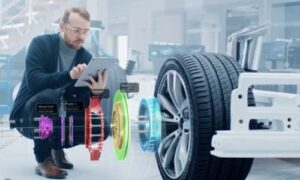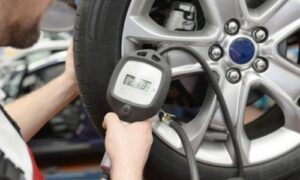Drivers must comprehend the fundamentals of vehicle upkeep. Maintaining your car regularly keeps it in excellent shape and ensures smooth operation. Additionally, it increases the lifespan of your vehicle and helps you avoid paying for expensive repairs. This post will review essential automobile maintenance advice every motorist should know.
-
A dead battery is the most typical cause of automobile breakdowns in the US, followed by a flat tire and engine issues.
-
The type and model of an automobile, along with its age, condition, and safety features, all impact how much auto insurance it will cost.
-
The average cost of a car’s yearly maintenance in the US is around $700, according to a RepairPal poll.
-
The worldwide car repair and maintenance market, valued at $441.3 billion in 2020, is anticipated to expand at a CAGR of 5.8% between 2021 and 2028.
Introduction
Maintaining your car is crucial to keeping it in excellent functioning order. Your vehicle will operate smoothly, last longer, and cost you less money to maintain with proper care. This post will review some vital automobile maintenance advice every motorist should know.
Frequently Changed Oil
Changing the oil regularly is one of the most crucial car maintenance duties. The engine oil keeps the engine lubricated and prevents it from overheating, which may result in significant damage. The majority of automakers advise oil changes every 5,000 to 7,500 miles. However, the manufacturer’s suggested oil change interval can be found in your car’s owner’s manual.
Considering the Fluids
Maintaining the health of your car requires routinely monitoring the fluid levels. Engine oil, brake fluid, power steering fluid, coolant, and windshield washer fluid are among the vital fluids you should check. Your car’s engine and other components may suffer significant harm from low amounts of these fluids. Regularly check the fluid levels and top them off as necessary.
Checking tire pressure
Proper tire pressure is essential for your safety and your car’s health. Low tire pressure may result in blowouts, poor handling, and poor gas economy. At least once a month, check the tire pressure on your car and fill the tires to the manufacturer’s suggested pressure level. Check the spare tire as well, don’t forget.
Annual Brake Inspections
One of the most crucial safety components in your car is the brakes. It’s essential to do routine brake inspections if you want to be safe while driving. Regularly check your brake pads and rotors for wear and tear. Take your automobile to repair immediately if you notice strange sounds or sensations when braking.
Replacement of Air Filters Frequently
The air filter stops dust, grit, and other debris from entering your automobile’s engine. If the air filter is blocked, your car’s engine may suffer damage and use less gasoline. Replace your car’s air filter when it becomes clogged or filthy by checking it often.
Spark plug replacement
Spark plugs ignite the gasoline in the engine of your automobile. These should be inspected often, and when they wear out, they should be replaced. Spark plugs that are worn out may harm engines and result in misfiring and decreased fuel economy.
Routine battery inspections
The battery in your car is in charge of supplying electricity to the starter and other electrical parts. Regular battery checkups are essential for your vehicle to start and function properly. Replace the batteries in your automobile when it starts to fail or grow weak regularly.
Did you know the Dead Battery’s Jump-Start Procedure?
You should be able to jump-start a car since most car owners will sometimes have a dead battery. If you follow these four straightforward procedures, jump-starting a vehicle is a simple and safe piece of essential car maintenance:
- Connect the positive cable to the strong battery’s positive terminal with a clamp. (Be careful not to let the other end contact the car’s body or engine; doing so might cause a hazardous spark.)
- Connect the opposite end of the positive line to the good battery’s positive terminal using a clamp.
- Connect the negative cable (black) to the good battery’s negative terminal using a clamp.
- In a vehicle with a weak battery, clamp the other end of the negative cable to a clean metal component of the engine, such as a bolt head or bracket. (Remove the clamp from moving parts, the battery, and the fuel system.)
Washing the vehicle
Cleaning your automobile regularly improves both its appearance and health. Rust and other damages to your car’s body and substructure may be brought on by dirt, grime, and road salt. You should wash and wax your automobile frequently to maintain the paint and avoid corrosion.
Conclusion
Maintaining your car’s functionality and guaranteeing safety on the road requires regular car maintenance. Some of the basic auto maintenance procedures that every motorist should be familiar with are the ones states above. Increase the lifetime of your automobile, save on expensive repairs, and drive securely by paying attention to this advice.






